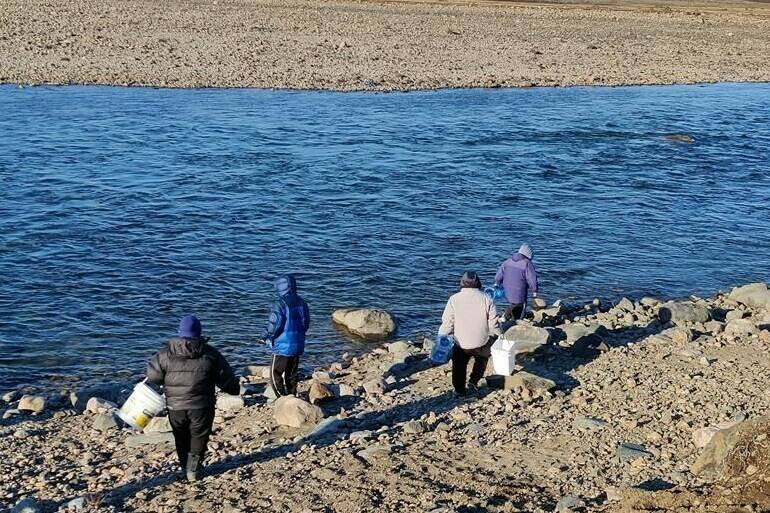When staff at Iqaluit’s Qajuqturvik Community Food Centre heard the news last week that water from the city’s distribution pipes wasn’t safe to drink because of fuel contamination, they knew some people weren’t going to be able to get the precious liquid themselves.
The city set up two distribution sites where people could fill up jugs with potable water, and many were able to drive to the nearby Sylvia Grinnell River and collect it themselves to boil for drinking.
But Rachel Blais, executive director of the food centre, which runs a meal service and other community programs, said many people don’t have vehicles. Others, she said, have kids or work multiple jobs and don’t have time to get water.
“We know that we have a lot of community members who are experiencing homelessness, or don’t have access to transportation, or have disabilities or mobility issues, people who are elders, people who have children at home, the list goes on,” Blais said in a phone interview Sunday.
The Nunavut capital’s 8,000 residents were told on Tuesday not to drink the tap water after complaints started flooding in that it smelled of fuel.
City officials later said testing revealed a high concentration of various fuel components in a tank that supplies the water. The city has isolated and bypassed the tank, and once it is emptied and flushed, the authorities will investigate where the contaminants came from.
Tap water can still be used for bathing, showering, laundry and washing dishes, according to the city.
Blais said the first thing her group did was post a message on Facebook asking if anyone needed help getting water. They got calls and emails immediately, and at first their staff and members of their pre-employment training program filled the need. They then applied for and received emergency funding from Qikiqtani Inuit Association and Community Food Centres Canada to hire a full-time driver.
That driver now fills water jugs at the city’s distribution points, or goes to the river himself if the lines are too long, and brings them to homes in a cargo van. Deliveries are also made to other community groups like the local women’s shelter.
The water that’s needed isn’t just for drinking. The city is also advising people not to cook with or clean food with tap water.
“We’ve got a lot of community members who have a lot of people in their households — a lot of children in their households — and they need a lot of water,” Blais said.
Another challenge, she said, was that local stores ran out of water jugs right away. Some of the people who needed water delivered couldn’t afford the jugs anyway, Blais added. So starting Monday, she said they’ll be delivering water in large Rubbermaid totes.
The Nunavut government has also been flying in shipments of potable water. Agnico Eagle Mines delivered approximately 15,000 litres of water to Iqaluit on Friday and Saturday as well.
Nunavut’s chief public health officer, Dr. Michael Patterson said last week that there does not seem to be any health risks to Iqaluit residents who drank contaminated tap water, and that people may be able to start drinking it again in the middle of this week depending on more test results.
Patterson said the contamination didn’t happen naturally, and could be from an old oil spill that’s been released with thawing permafrost.
The city said its water-engineering consultants suspect that contaminants outside of the plant, that are located in the soil or groundwater, have entered the tank from the exterior.
Blais noted the water situation in Iqaluit is not unusual in many Canadian Indigenous communities, where boil-water advisories are the norm. Climate change and the city’s growing population are other threats to water security, she said.
Iqaluit is very lucky to have the Sylvia Grinnell River so close, she said.
“If we didn’t have access to that clean water source, I don’t know what the situation would have been.”
— Rob Drinkwater, The Canadian Press
RELATED: Nunavut declares emergency in Iqaluit, city receives first shipment of potable water

